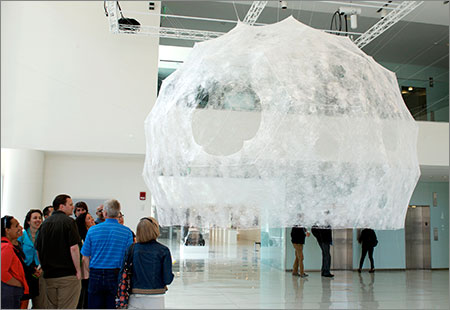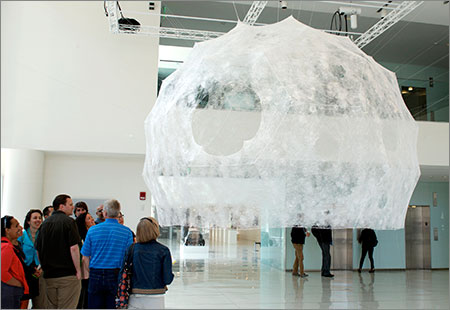Investigate organisations that support and fund research by artists in non-arts fields. I decided to look at my local situation as well.
Rupert Art Foundation and the Social Impact Prize
The Social Impact Arts Prize welcomes entries that will inspire communities and use creativity to engage with social challenges.
Artists, architects and engineers, landscapers, environmentalists, creative visionaries and other experienced community-based creatives are invited to submit impactful, creative and meaningful ideas and concepts for the award’s consideration. it is supported by the Anton Rupert Foundation, a non-profit and the Rupert Museum in Stellenbosch. It calls for arts-based activities, projects or programmes in specific categories in South Africa – education, employment, community, environment, technology and direct arts – where social impact can be both qualitatively and quantitatively measured.
Climate Art Foundation
This is a Berlin-based association that publishes and curates climate and nature-related artworks. Their aim is to make climate change and its associated impacts accessible and approachable to a global audience, as well as to preserve the beauty of our planet.
COLAB Foundation
BAZ -Art
Neri Oxman and Oxman company

I came upon the work of Neri Oxman, who coined Material Ecology. I learned about the term anthropomass from her, and she acknowledged Ron Milo’s definition of anthropomass in 2020 when he identified that 2020 was the crossover year when anthropomass exceeded biomass on the planet. In a podcast conversation with Lex Fridman, they discuss plant communication (00:56:14 – 00:58:40), and she refers to plants having a kind of ecological intelligence that is focussed on a particular time scale, which is very slow. I particularly valued her conclusion that, as humans, we need a kind of shift, a humility regarding nature and understanding that it operates at different scales. She shares info about a rose and its molecular footprint, being different at nighttime to during daytime. She suggests there’s peace and rest amongst plants, like at 4 am when a jasmine field smells, and times they emit given stresses. This reminds me of studies on thorn trees when foraged by animals and how they will secrete tannins to send a signal to other trees and thus control overgrazing. It is clear to tune into this kind of time dimension; humans need humility when we look at how we use and abuse nature. I can relate so well with trees in this regard, having had excellent interactions with old African trees such as the Baobab and Leadwood trees – the making/growing took hundreds/thousands of years. When I think of mushrooms, I regard them as old souls, having learned so much about adapting and responding to changing environments.

This work was done by Neri Oxman and the Mediated Matter Research Group at the MIT Media Lab in collaboration with colleagues from Harvard’s Wyss Institute and Tufts University. The primary structure was created of 26 polygonal panels made of silk threads laid down by a CNC machine. The final construction of the “Silk Pavilion,” a dome-like structure suspended from the ceiling and covering more than 100 square feet of floor space, was completed with the help of 6,500 silkworms and a robotic arm. The Silk Pavilion explores the relationship between digital and biological fibre-based fabrication on an architectural scale. I agree that the silkworms became collaborators, engineers, and designers of this series of works.
Looking at Neri Oxman as a creative, she works within the modernist tradition and cites architects such as F Kiesler and B Fuller as her key influences. Critiques concluded that with her work, the Materialecology series, Oxman cemented her position as a designer in both the practical, conceptual, and historical realms. As a modernist, this work questions and expands its ideas of design. “Modernism”, she has said: advocates for the static design that is reliant on mass manufacturing, the homogeneity of material properties, and centralized fabrication. Material Ecology in turn proposes a dynamic approach to design in which the merging of computation and nature can allow for mass customization”. . While the assembly lines of modernity dictate a world made of parts, Material Ecology envisions a world in which we might not be able to differentiate between what is made and what is grown. This is Oxman’s idea of a new materiality: one in which the novel computational technologies that emerged during the recent Digital Age allow designers and architects to transition into what she calls the “Biological Age.” (The Museum of Modern Art, “Neri Oxman: Material Ecology – Live Q&A with Paola Antonelli and Neri Oxman”, YouTube video, 1:00, https://www.youtube.com/watch?v=TUjlAGhukh)
I think ideas around designing with nature is a reaction by designers and architects towards ecological failures of modern design and fabrication – we almost need a new materiality. We are seeing a growing interest in innovation within this field. As an artist, this is an exciting time to explore these new materials.
(https://www.moma.org/d/pdfs/W1siZiIsIjIwMjAvMDMvMTgvN3h0aTB0ZDIwZV9Nb01BX094bWFuX1BSRVZJRVcucGRmIl1d/MoMA%20Oxman%20PREVIEW.pdf?sha=b9de8a989ee0332c)